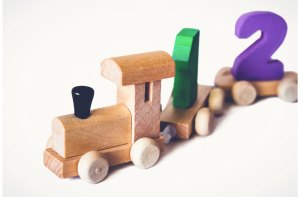Abacus revolutionised the way people used to perform calculations. Before this invention, people used to count using their fingers. It was invented in ancient times and its root is still unknown. Abacus was widely used in China, Russia, and Europe and in some areas of the Near East.
Then, the numeral system came and replaced the abacus. But the question arises what is the use in the modern world? Maths has never been the favourite subject of some kids. It’s because children do not like the way we teach maths in school.
So, introducing an abacus might make it more interesting for kids. Children would love to play and learn with an abacus, so it can be a good way to teach them in their way. Besides, some other reasons make an abacus important to learn for children.
Learn with Games
Now the abacus is more being used as a toy for kids instead for performing calculations. Children are familiar with the abacus as a toy. So, if we can teach them math using their toy, it would become the most interesting subject for them.
In this way, children will also get to know about the history of the abacus and its uses without being bored. If you try to convey the history of the abacus to kids without it, they will not take an interest. This is how human psychology works particularly in kids, we learn most when we enjoy it. Besides, it will instil eagerness in them to learn more about this interesting subject. Eventually, children will develop interest in maths.
What are the benefits of Abacus Learning?
Children use their hands while using the abacus. Whenever we use our hands, it stimulates mental health. It has proven to be quite effective for the human brain. It activates some brain sensors and takes the anxiety off. Children start taking interest in maths because they find the abacus interesting. Apart from these, some other benefits are briefly explained below:
Helps to Increase Concentration
Performing calculations using an abacus requires a lot of attention and concentration. You must know which column has what value and other things. If you move away for a second, you may lose all focus and you may have to do it all again.
When children learn to use an abacus, it improves their concentration. It is not far when these kids will start visualising the abacus and performing calculations. This requires even more concentration. In this way, an abacus helps children to concentrate.
Improves Memorization
We’ve mentioned how using the hand activates the brain sensors. When children use an abacus, they have to keep in mind which column has what value. Because it plays an important part in performing calculations.
Children have to keep in mind the final image of the abacus to give the right answer. So, this continuous usage of the mind improves memorization. Children will be able to quickly grasp it because of abacus learning.
Reduce Stress
Children employ their hands while using the abacus. It stimulates mental health which further leads to lowering stress and anxiety. Children enjoy learning maths with an abacus. When you enjoy something, then it takes off almost all the stress from you. After learning the abacus, they won’t even find maths boring. They will be eager to learn more interesting things about it.
Improve Speed Calculation in Maths
Once kids master the use of the abacus, they tend to visualise the abacus and perform calculations in their heads. This practice is encouraged as it increases the imagination and concentration skills of children.
This activity, when excelled, improves the speed calculation in maths. Children don’t find maths time-consuming anymore, because their calculating speeds improve to a pretty good extent. Besides, this speed will also help them in their exams, particularly those who require children to solve the problems in a limited time frame. Children start processing things in their head quickly, and it leads to improved speed in maths.
In a nutshell, children should be introduced to abacus. It has numerous benefits but the primary reason is that it develops the interest of children in maths.




